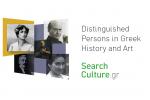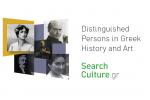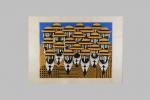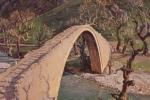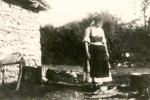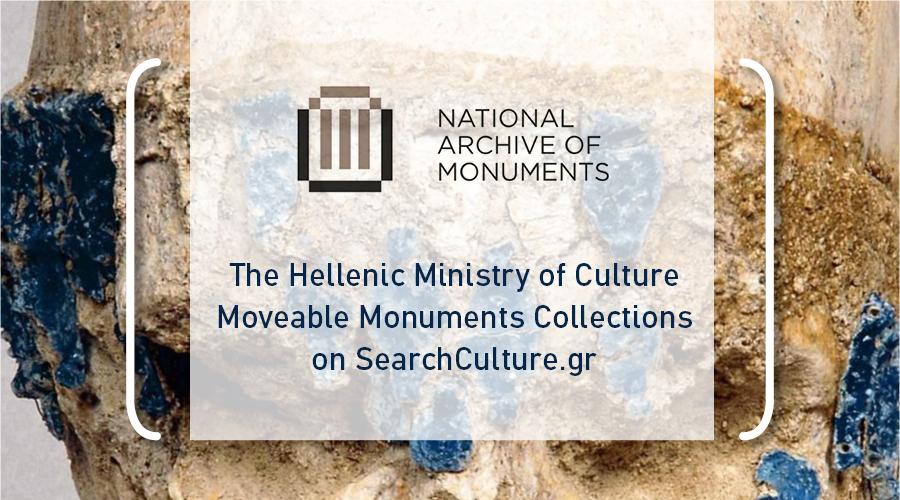
The Moveable Monuments Collections of the National Archive of Monuments are now available from Searchculture.gr, the national cultural data aggregator developed by EKT. This is an important step for the promotion of cultural heritage in Greece and internationally. A large number of cultural heritage objects from the Directorate of the National Archive of Monuments of the Ministry of Culture and Sports, some 67,825 items, are now available and more will be added. The Digital Collections of Movable Monuments include the movable monuments that are protected under the provisions of Law 3028/2002.
The Moveable Monuments Collections include objects from the collections of the Regional Services (Ephorates of Antiquities) and the Ministry of Culture and Sports Museums, such as the Archaeological Museum of Thessaloniki, the Byzantine and Christian Museum, the Numismatic Museum and the Museum of Modern Greek Culture. It is one of the three sections that make up the National Archive of Monuments, together with the Archaeological Land Registry and the Historical Archive of the Archaeological Service.
The movable monuments that have been included in the Digital Collections of the National Archive of Monuments have been selected by the scientific personnel of the Ministry of Culture according not only to the archaeological, historical and cultural value of the monuments and consequently their potential interest for the world scientific community and the wider public, but also according to their particular perservation needs.
The objects included in the digital collections relate, for the most part, to excavation findings and archaeological research, in which the Archaeological Service has been engaged since the 19th century. Another group of objects are portable icons, various material culture objects and antiques. A third, smaller group of objects reflect modern Greek culture and they come from different collections, such as the Museum of Modern Greek Culture. In their entirety, the monuments that have been registered in the National Archive of Monuments reflect the wealth, the variety, the conceptual and chronological range of cultural heritage throughout Greece.
The content
The co-operation of EKT with DEAM significantly increases the archaeological content in the national aggregator of cultural content SearchCulture.gr. Semantically enriched, the content of the Moveable Monuments Collections, is connected with other content in SearchCulture.gr, strengthening interdisciplinary research. The aggregation of a critical volume of archaeological data expands the dynamic for posing complex, new research questions and enriches the field of Digital Humanities with big data.
At the same time, citizens and educators can easily explore this valuable content, using smart filters and different navigation possibilities at SearchCulture.gr, to locate content for study, inspiration, creative reuse, teaching and lifelong learning.
Using, for example, the new person-search functionality, one can approach the work of Greek scholars of past centuries, such as Bartholomew Koutloumousianos (1772-1851), Emmanuel Glytzounis and the Damaskinos Stouditis (16th century scholars) personalities of modern history and art, such as Polykleitos Regkos, the well-known popular painter Theofilos and the (Karagiozis) shadow puppet artist Vasilaros. In addition to Persons, it is worth browsing the types of items, selecting individual categories, for example paintings or sculptures or even smaller groups of objects, such as masks and disguises.
A wealth of evidence of human presence in Greece is offered through the Moveable Monuments Collections, a wealth that captures every aspect of Greek culture: numerous works of religious art, such as icons, works that document everyday life such as coins and inscriptions, weapons – ranging from Neolithic clubs, the aptly called 'skull breakers', to the famous yataghanis and flintlocks used in 1821.
In the Moveable Monuments Collections you can explore every aspect of human activity for the past 5,000 years; objects created by humans to facilitate their daily lives, such as tools and equipment, among them objects with names and uses unknown to modern man. such as 'palaska' ie cartridge case, 'sviga' a weaving tool, 'zarfi', a word that many may recall from refugee literature and is the metal, often wire, case that surrounds a Turkish cup of coffee. There are items that may seem peculiar to the modern viewer, such as a cardigan made of human hair, which could be found in a cabinet de curiosités.
Another particularly fascinating section of the Moveable Monuments Collections are the textiles, the costumes, among them countless priestly vestments and liturgical garments, the jewellery and all kinds of objects which women and men made with skill, passion and art throughout Greece's long history. Through almost 70,000 objects one can study human ingenuity to find solutions using the materials available in their region and the daily life of Greece. The variety and content range of the Moveable Monuments Collections is sure to fascinate all.
The collaboration
The enrichment of the Moveable Monuments Collections of the Ministry of Culture and Sports and the Development of the National Archive of Monuments New Information System was first included in the OP 'Digital Convergence' (Call 31.2) and then in the OP 'Competitiveness-Entrepreneurship and Innovation' implemented by the Management Department of the National Archive of Monuments. As the Minister of Culture, Lina Mendoni, stated at the presentation of the project, the archive 'meets the needs and obligations of providing direct and free access to public information in accordance with national and Community legislation (INSPIRE Directive, open data)'
Through the web Portal of the National Archive of Monuments, EKT, in turn, was able to complete the integration of metadata and preview files of digital collections in SearchCulture.gr, according to the commitments of Call P31.2 of OP 'Digital convergence'. After the metadata was collected from the 67,825 items available on the Portal (title, author, description, date, type, material), they were organised into separate sub-collections and small preview images were created from the web-site images. Subsequently, the records were enriched with terms from EKT's vocabularies (thematic tags, types of items, historical periods and persons) - a process that aims to ensure seamless search and navigation in all the collections included in SearchCulture.gr - and then added to the public portal https://www.searchculture.gr/ .
The outcome and common goal of the two institutions is the availability of more reputable cultural content in the Digital Public Space for the benefit of all citizens, for enjoyment, creation and learning.
About SearchCulture.gr
SearchCulture.gr is the National Aggregator of Digital Cultural Content and the accredited national aggregator for the European digital library Europeana. It collects metadata and preview images of digital cultural resources from the websites and repositories of participating organisations and publishes them enriched in the Search Portal. The upgrade and expansion of the SearchCulture.gr aggregator with new functionalities, is being carried out by EKT under the framework of the operation 'National Information System for Research, Technology,Development, innovation - Aggregation, Documentation and Dissemination of Digital Content & Data, that promotes interoperability, long-term preservation and open access' . The operation is being implemented as part of the Operational Programme 'Public Sector Reform'(NSRF 2014-2020) and is co-financed by the European Union - European Regional Development Fund and national resources.











